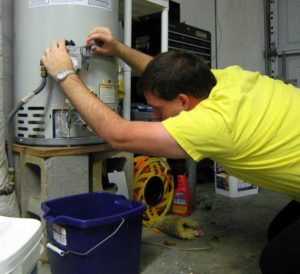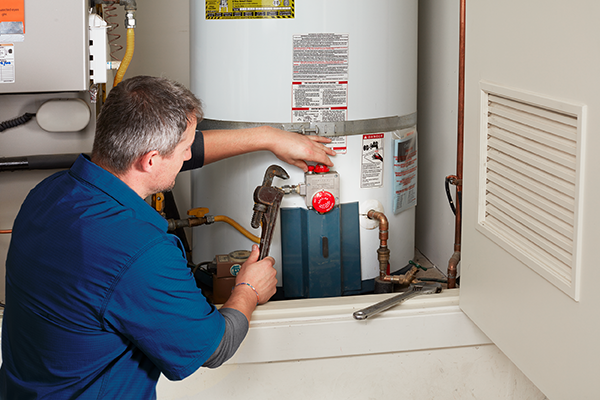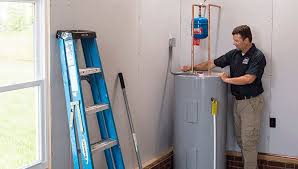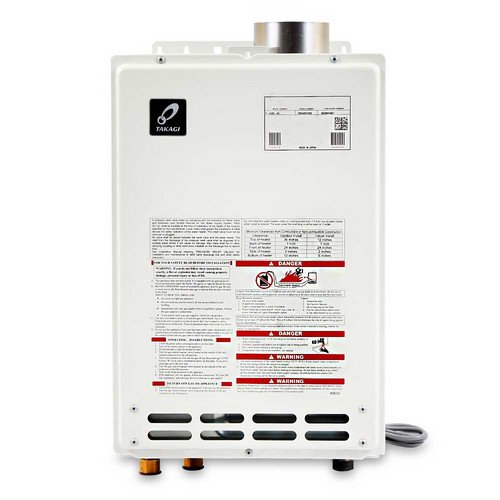Benefits Of A Water Heater Inspection For Safety
Water heaters are an important part of our lives. We usually take them for granted until the first time we find icy water awaiting us in the shower. It’s a chilly reminder that we need to take care of our water heater. Water heaters come in many types, shapes and sizes. Natural gas (or LP) or electric tank type are the most common. Like everything else in the house, a little bit of maintenance and periodical inspections can work to get the most life out of a hot water heater.
Inspecting your water heater regularly is a very important, but often over-looked home maintenance step. Water heaters typically last for 8-13 years, and if your water heater is over 10 years old, inspecting it at least annually is very important. An inspection can identify a small problem before it becomes a larger one. Leaks, rust and other issues only get worse with time, which means that the sooner you can deal with them, the better.
There are several steps you can take yourself to keep the water heater running smoothly:
- Inspect the Pressure Valve: Make sure your pressure valve is working correctly by turning off the power and water to your hot water unit and then tripping the valve. Air, water or vapor should come out – if they don’t, you need to replace the valve. A malfunctioning valve could cause an explosion if the tank becomes over-pressurized.
- Flush out Your Tank: It’s a good idea to empty the tank once a year or so to remove any sediment that has accumulated inside, and it’s convenient to take care of this chore at the same time you check the pressure valve. With the tank disconnected from water and power, hook a hose up to the drain valve and place the other end somewhere where it’s safe to discharge hot water. Next, with the pressure valve already open, flip open the drain valve and let all the water flow out. Finally, hook up the water to the hot water heater again and turn on your hot water faucets. Wait until water starts coming out before you power up the heater again.
- Check on Your Anode Rod: The anode rod helps prevent corrosion in your hot water tank and is an essential tool for prolonging the life of the equipment. You can check on it while the tank is drained by unscrewing the hex head at the top of the tank and pulling out the rod. If it has become very thin, or if it’s coated in sediment, it’s time for a replacement. In general, anode rods should last about five years, but it’s a good idea to check on them annually.

Gurgling or Groaning Noises
Don’t worry about any gurgling or groaning noises coming from the heater. That sound is just air entering the system as water drains out. If the drain valve won’t close tightly when you’re done, drain the tank completely, unscrew the old valve and screw in a new one. To restart the water heater, open the shutoff valve and let the hot water run at any faucet to purge air from the system. Then turn on the power or relight the pilot.
Set your water heater’s dial to 120 degrees F. If the dial doesn’t have numbers, check the water temperature with a cooking thermometer. Higher temperatures increase sediment buildup and the risk of scalding injuries.
Reasons to Have Your Water Heater Inspected
Water heating accounts for approximately 14 percent of your home’s annual energy costs. That makes it the third largest “energy consumer” in your home. Only your heating and cooling systems consume more.
That’s reason enough to schedule a water heater performance and safety inspection from Service Pros. But just for good measure, here are four more:
- Over time, sediment deposits build up inside your water heater storage tank; these can hinder its performance and cause your tank to crack and leak.
- Gas water heaters are capable of leaking carbon monoxide gas. That can lead to serious health issues for you and other family members.
- Other things can go wrong with your water heater, too, including temperature fluctuations, internal corrosion that causes rust-colored hot water, leaking around the bottom of your storage tank, and more.
- The average lifespan of a water heater is only about 12 years, and yet with annual preventive maintenance, yours can perform better and last longer.
Tankless Water Heater Maintenance Tips
Tankless water heaters heat water on demand, instead of storing it in a tank, but they still need regular maintenance. Many such units will indicate when maintenance is required, but you should plan to perform maintenance yearly, or more often if you have hard water.
Flush the Water Heater
To flush a tankless water heater, turn off the gas or power and cold water to the unit. Shut off the hot water valve that sends hot water from the unit to the house. Attach a garden hose to the outlet of a sump pump, and to your unit’s cold-water isolation valve.
Attach a second length of hose to your unit’s hot-water isolation valve. Place both the end of this hose, and the pump, in a five-gallon bucket. Then fill the bucket with five gallons of fresh, food-grade white vinegar.
Open both the cold and hot isolation valves on your unit, turn on the pump, and let the vinegar circulate through the unit for about 45 minutes. Throw out the used vinegar, fill the bucket with plain water, and flush the unit again for about five minutes.
Clean the Air Intake Filter
While you are flushing your tankless water heater with vinegar, you should clean the air intake filter. The air intake filter keeps debris from getting into your tankless water heater. Cleaning it keeps air flowing smoothly into the unit.
You can access the air intake filter by removing your unit’s face plate – check the user manual for specific instructions. Once you’ve got the filter out, rinse it thoroughly with clean water, then dry it with paper towels before reinstalling it. Disconnect your hoses, screw on all service caps tightly, then open the cold and hot water valves and restore power and, if necessary, gas to the unit. Check for and address any leaks.
Upkeeping Your Water Heater Maintenance
Water heater maintenance may not be fun, but it can help you save the money you’ll need to do the things you will enjoy, because it can drastically improve the life of your water heater. Take care of your water heater today, or tomorrow you could find yourself shelling out hundreds to replace it before its time. When you invest in American Home Shield, you will enjoy robust coverage for your water heater because many parts and components are included in the warranty.

What Are The Four Key Action Items Of Preventive Maintenance?
Preventive maintenance takes a proactive approach towards maintenance and involves four key action items: inspection, detection, correction and prevention. Let’s take a closer look at how each concept is fundamental to a successful preventive maintenance program.
- Inspection: Inspections are a necessary part of preventive maintenance and aid organizations in two ways. First, facility inspections ensure that equipment is safe to use. Regular inspections help prevent workplace injuries and provide a business with increased liability protection. Second, regular inspections protect property. Inspections ensure that equipment is functioning as the manufacturer intended.
- Detection: Operating on a run-to-failure approach can end up costing a facility department significant money, which is why many facility managers choose to utilize a preventive approach to maintenance. Preventive maintenance helps facility managers detect problems early, when issues are still relatively easy and inexpensive to fix.
- Correction: Preventive maintenance encourages facility managers to take a proactive approach towards equipment care and correct issues before they occur. If an issue (or potential issue) is detected, facility managers take steps to promptly address the problem before it worsens or shuts down operations.
- Prevention: Facility managers can combine inspection records and maintenance notes to learn from past mistakes and correct repeated issues with equipment. Prevention of asset failure reduces stress and increases productivity for facilities teams. When equipment works as inspected, staff can focus on proactive (rather than reactive) maintenance tasks.

